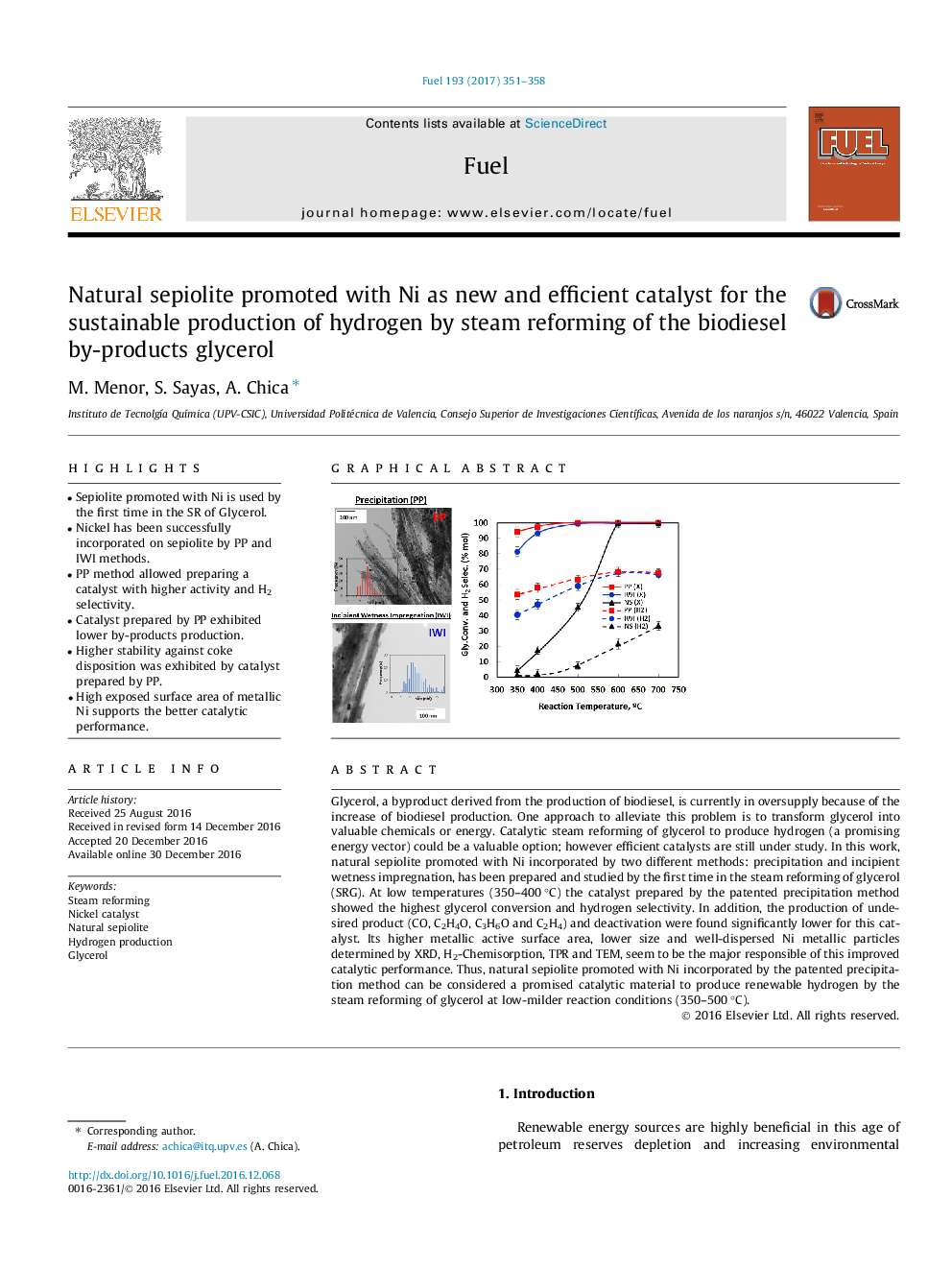| Article ID | Journal | Published Year | Pages | File Type |
|---|---|---|---|---|
| 6474961 | Fuel | 2017 | 8 Pages |
â¢Sepiolite promoted with Ni is used by the first time in the SR of Glycerol.â¢Nickel has been successfully incorporated on sepiolite by PP and IWI methods.â¢PP method allowed preparing a catalyst with higher activity and H2 selectivity.â¢Catalyst prepared by PP exhibited lower by-products production.â¢Higher stability against coke disposition was exhibited by catalyst prepared by PP.â¢High exposed surface area of metallic Ni supports the better catalytic performance.
Glycerol, a byproduct derived from the production of biodiesel, is currently in oversupply because of the increase of biodiesel production. One approach to alleviate this problem is to transform glycerol into valuable chemicals or energy. Catalytic steam reforming of glycerol to produce hydrogen (a promising energy vector) could be a valuable option; however efficient catalysts are still under study. In this work, natural sepiolite promoted with Ni incorporated by two different methods: precipitation and incipient wetness impregnation, has been prepared and studied by the first time in the steam reforming of glycerol (SRG). At low temperatures (350-400 °C) the catalyst prepared by the patented precipitation method showed the highest glycerol conversion and hydrogen selectivity. In addition, the production of undesired product (CO, C2H4O, C3H6O and C2H4) and deactivation were found significantly lower for this catalyst. Its higher metallic active surface area, lower size and well-dispersed Ni metallic particles determined by XRD, H2-Chemisorption, TPR and TEM, seem to be the major responsible of this improved catalytic performance. Thus, natural sepiolite promoted with Ni incorporated by the patented precipitation method can be considered a promised catalytic material to produce renewable hydrogen by the steam reforming of glycerol at low-milder reaction conditions (350-500 °C).
Graphical abstractDownload high-res image (86KB)Download full-size image
